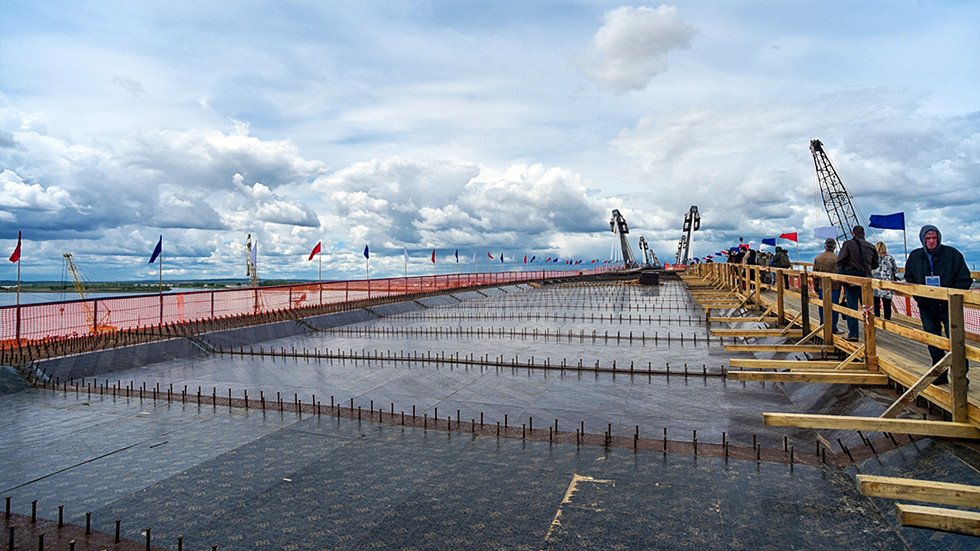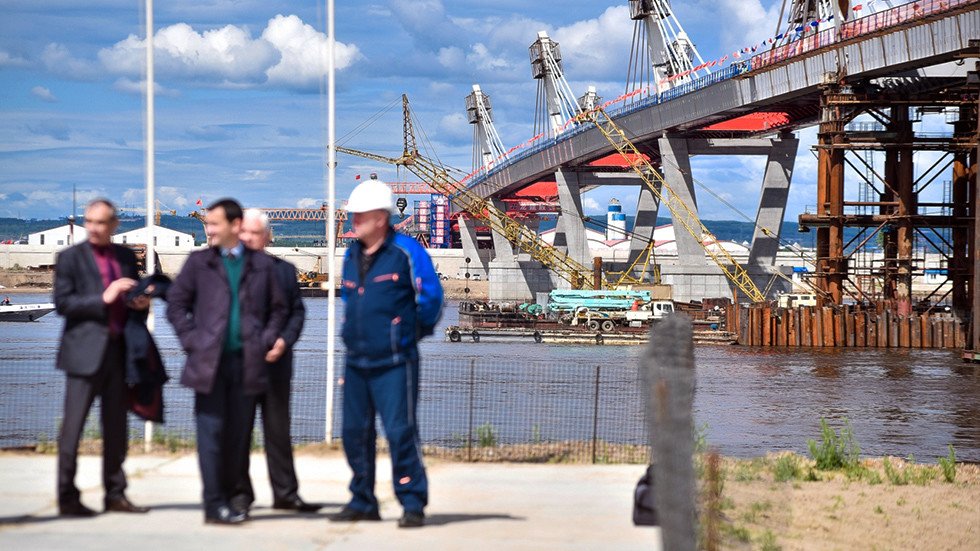Connecting nations: Russia & China link two parts of сross-border mega bridge
Two pieces of a highway bridge over the Amur River linking Russia and China have been successfully connected after workers from both sides tightened the last bolts of the concrete block linking the massive structure on Friday.
The 2,209-meter-long (1.4 miles) bridge, connecting the Russian city of Blagoveshchensk with the Chinese city of Heihe, in the country’s northern-most Heilongjiang province, will provide citizens of the neighboring countries with a two-lane highway.

The cable-braced bridge will be brought into service as soon as April next year, according to Alexander Kozlov, the Russian Minister for the Development of the Far East.

The ambitious project, which has been implemented under the terms of the concessionaire agreement between Beijing and Moscow, was started in December 2016, when the countries launched a Chinese-Russian joint venture on a parity basis.

The length of the Russian part of the bridge totals 540 meters with overall length of access roads reaching 13 kilometers (8 miles). The Chinese part of the bridge totals six kilometers (3.7 miles). The carrying capacity of the bridge is expected to top 630 trucks, 164 buses and 68 passenger cars a day, and will provide cross-border transportation for 5,500 people.
Speaking to RT and Chinese reporters, China’s Ambassador to Russia Li Hui said that the two countries have been actively creating cross-border infrastructure. Another train bridge between Tongjiang and Nizhneleninskoye has been recently linked, he noted.
“The construction of the infrastructure goes on steadily. The transport infrastructure projects are developing well, including international transport corridors in Russia’s Far East and creation of cargo expresses between China and Europe,” Li said.

The new connection is set to boost the export potential of Russia’s Amur region, according to Vasily Orlov, who heads the federal district. The agriculture and derived products are reportedly the region’s competitive advantage. The governor highlighted that 40 percent of soy grown in the region in 2018 was exported to China.
For more stories on economy & finance visit RT's business section














